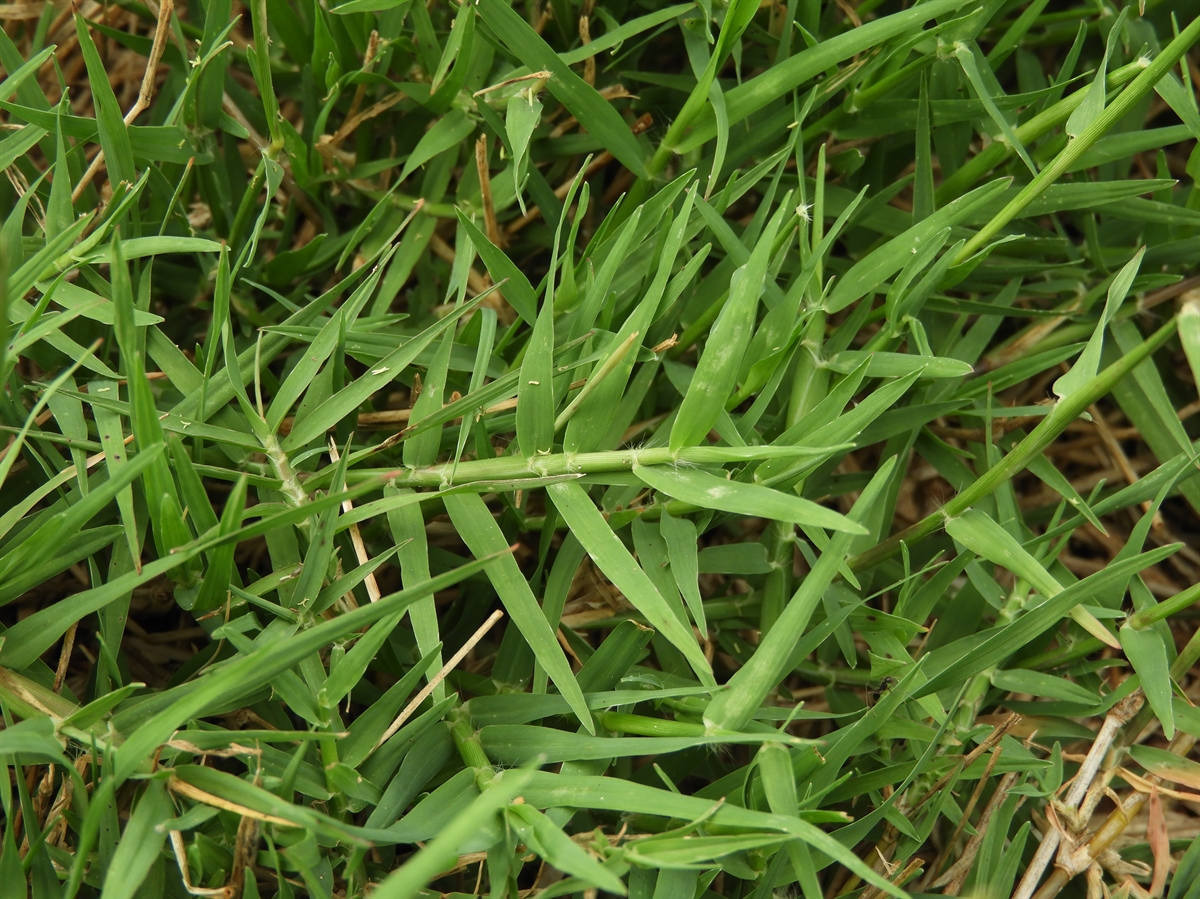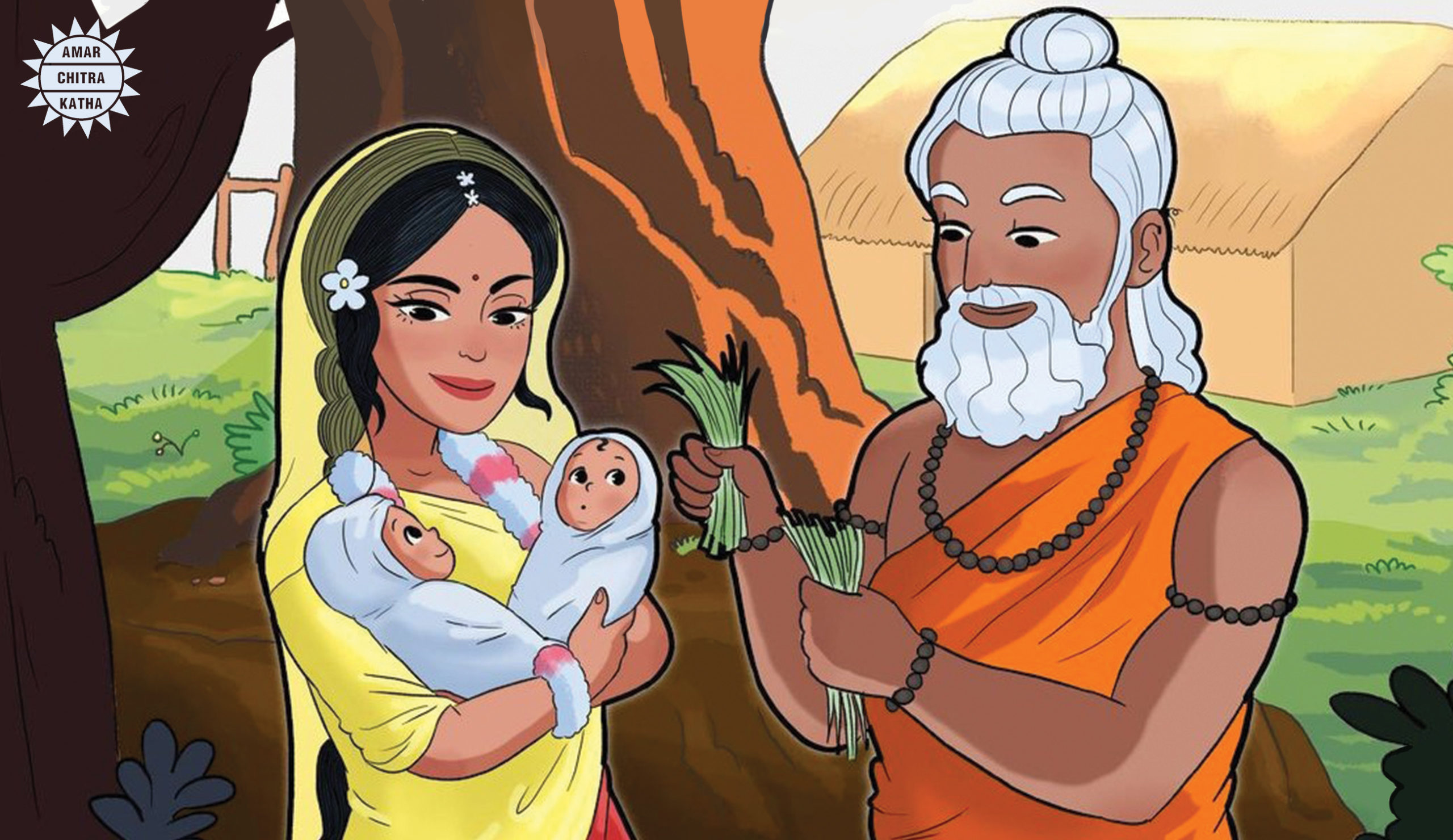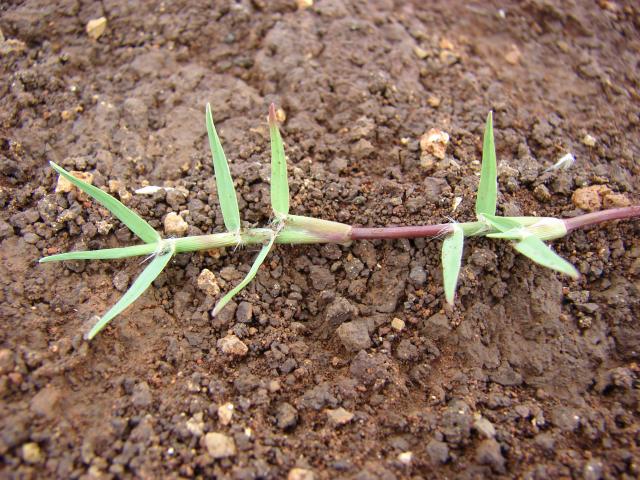Bermuda Grass
Have you ever heard of this grass? It is also called Scutch Grass. In Tamil, it is called Arugampul (அருகம்புல்), which goats love to eat.
 It is known for its medicinal nature, which is good for health and serves as food for cattle. In Southern India, people who worship Pillaiyaar (பிள்ளையார்: Lord Ganesh) offer him a garland made of Bermuda Grass. Some people gather cow dung, form it into an elliptical sphere, and insert Bermuda grass on the top, considering it a form of Pillaiyaar.
It is known for its medicinal nature, which is good for health and serves as food for cattle. In Southern India, people who worship Pillaiyaar (பிள்ளையார்: Lord Ganesh) offer him a garland made of Bermuda Grass. Some people gather cow dung, form it into an elliptical sphere, and insert Bermuda grass on the top, considering it a form of Pillaiyaar.
 Pillaiyaar is highly related to Arugampul. If you know Tamil, listen to the following songs on YouTube:
Pillaiyaar is highly related to Arugampul. If you know Tamil, listen to the following songs on YouTube:
1. Arugampullukkum Perumathanthathu Yaaru? Yaaru?
2. An Album In The Name of Arugampul
3. Arugampullil Asaivathu Yaaru?
I suspect that Pillaiyaar may have been derived from “Pullaiyaar” where “pul” means grass (just a fun suspicion). Other plants related to Pillaiyar are White Crown Flower (Calotropis gigantia : Root resembles Pillaiyaar), Holy Fig (Ficus religiosa : Leaf resembles Pillaiyaar) and so on.
It is given great importance in mythologies too. In the Ramayana, the sage Valmiki observes Sita’s son, Lava’s absence, and concludes that some animal had carried him away. Believing that Sita would not be able to bear the loss of her son, Valmiki creates an identical son from kusha grass (some say it’s not Bermuda Grass) and places him on Lava’s cot. When Sita and Lava notice Lava’s doppelganger, the sage explains what he had done, and she decides to raise the boy as Lava’s twin, naming him Kusha.
 This is in the Purana. In Tamil Bow Stories (Villu Paattu), people claim that when Sita entered the fire, the son made of grass was burned to ash. Ram gathers the ash and gives life to it. The burnt boy gets life and a dark color due to being burned. He is the so-called Karuppaswamy. Some people tell this story in the south. Well, there are many stories about Karuppaswamy. Some believe he is the son of Lord Shiva. Some believe he is none other than Lord Krishna. “Maal (மால்)” means black. Krishna/Vishnu is called Maayon (மாயோன்), Thirumaal (திருமால்). Even the evening time, which causes blackness, is called Maalai (மாலை) in Tamil. Now, let’s pay attention to Bermuda Grass!
This is in the Purana. In Tamil Bow Stories (Villu Paattu), people claim that when Sita entered the fire, the son made of grass was burned to ash. Ram gathers the ash and gives life to it. The burnt boy gets life and a dark color due to being burned. He is the so-called Karuppaswamy. Some people tell this story in the south. Well, there are many stories about Karuppaswamy. Some believe he is the son of Lord Shiva. Some believe he is none other than Lord Krishna. “Maal (மால்)” means black. Krishna/Vishnu is called Maayon (மாயோன்), Thirumaal (திருமால்). Even the evening time, which causes blackness, is called Maalai (மாலை) in Tamil. Now, let’s pay attention to Bermuda Grass!
 Its scientific name is Cynodon dactylon. In Greek, Cyno (Kynos) means dog, and odon refers to teeth (do you know Pepsodent?). Termites are known for their teeth, hence the scientific name Odontotermus obesus. So, Cynodon means dog-teeth. Does Bermuda Grass look like dog teeth? Yes!
Its scientific name is Cynodon dactylon. In Greek, Cyno (Kynos) means dog, and odon refers to teeth (do you know Pepsodent?). Termites are known for their teeth, hence the scientific name Odontotermus obesus. So, Cynodon means dog-teeth. Does Bermuda Grass look like dog teeth? Yes!
 Dactylon refers to fingers! Also, some words having one long syllable followed by one short syllable are known as dactyls in the English language. For example: bicycle (bi-cy-cle), fabulous (fab-u-lous).
Dactylon refers to fingers! Also, some words having one long syllable followed by one short syllable are known as dactyls in the English language. For example: bicycle (bi-cy-cle), fabulous (fab-u-lous).
 I guess now you can understand why dactyl means finger when looking at the following picture.
I guess now you can understand why dactyl means finger when looking at the following picture.
 Why does Bermuda Grass have the word dactylon in its scientific name? Look at the grass itself.
Why does Bermuda Grass have the word dactylon in its scientific name? Look at the grass itself.
 Well, it may not look like an exact dactyl, but it resembles our finger! That’s why it’s called dactylon!
Well, it may not look like an exact dactyl, but it resembles our finger! That’s why it’s called dactylon!
Cynodon dactylon is now a finger full of dog teeth.
